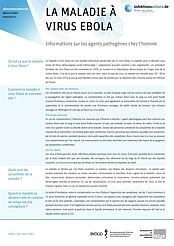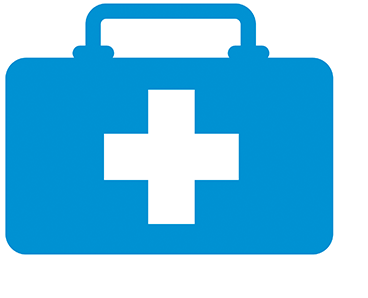From animals to humans
Flying mammals – such as bats and flying foxes – and apes from regions affected by Ebola fever are the pathogen’s most likely natural reservoir. There is a risk of infection from direct contact with the blood or other bodily fluids of infected wild animals, whether alive or dead. Transmission of the virus from animals to humans is also possible by the preparation and consumption of uncooked wild animal meat, known as "bush meat". Animals native to Germany are not carriers of ebolaviruses.
Person-to-person
During an outbreak, the infection is transmitted almost exclusively person to person. The pathogen can be transmitted via direct contact with blood and other bodily fluids such as sweat, saliva, faeces, urine or vomit from sick people or people who have died from the disease. There is a risk of infection only if individuals show signs of having the disease. Unprotected sexual intercourse with men who have survived the disease carries a risk of infection via their seminal fluid for several months after the first onset of symptoms. Airborne transmission of the disease (i.e. by breathing) has not been observed to date. Cases of vomiting or severe diarrhoea do risk releasing droplets containing pathogens, however.
Via objects
Ebola viruses can remain infectious for several days outside the body. Accordingly, infection via objects such as syringes, clothing or bedclothes contaminated with bodily fluids is therefore possible. On dry surfaces or surfaces that are exposed to sunlight, the virus is only infectious for a short while.


